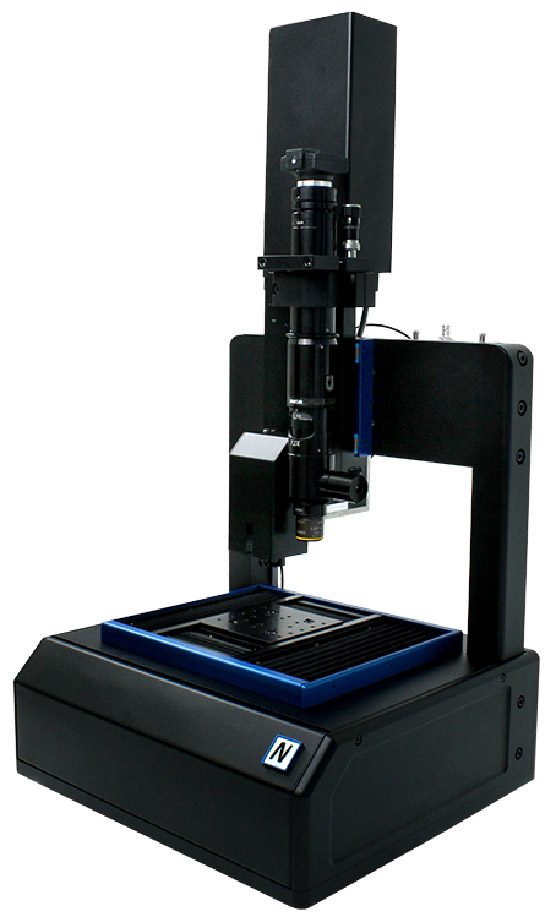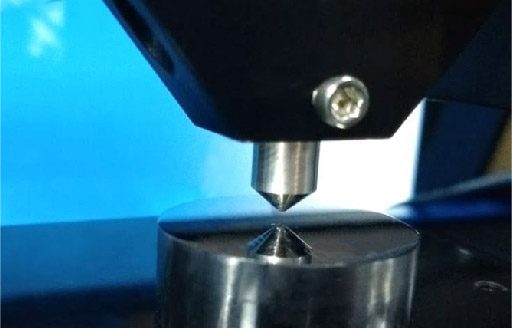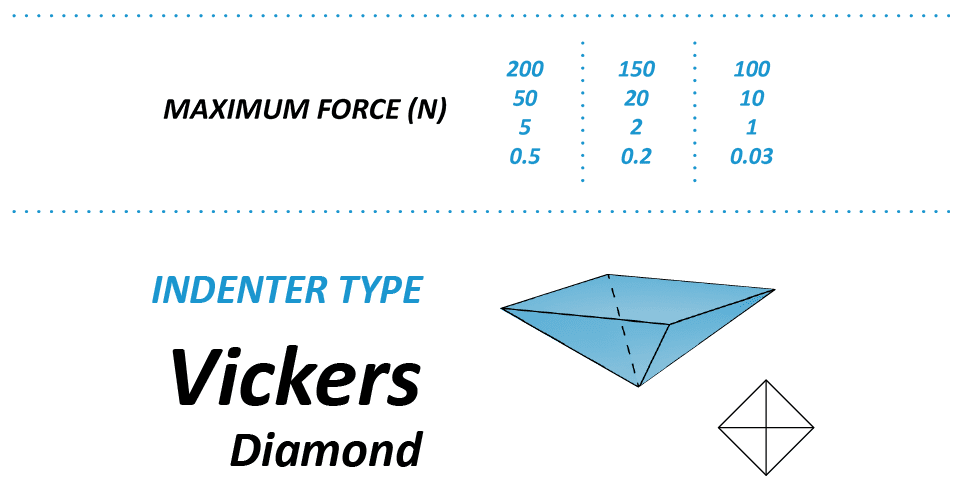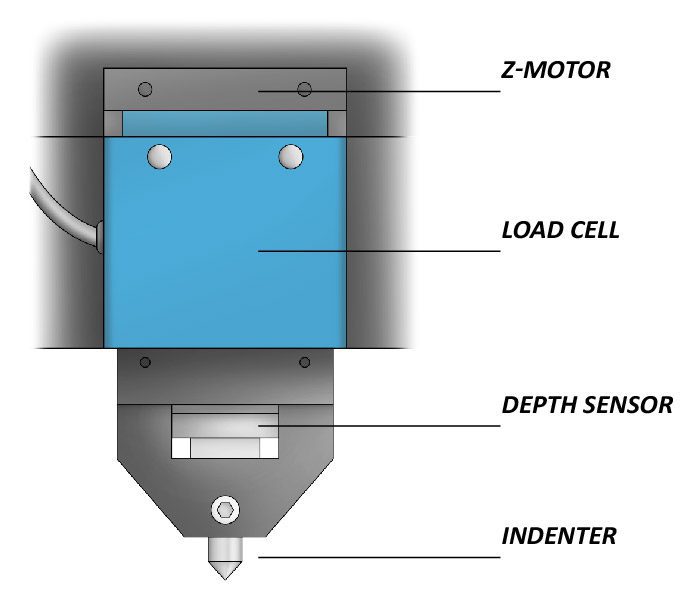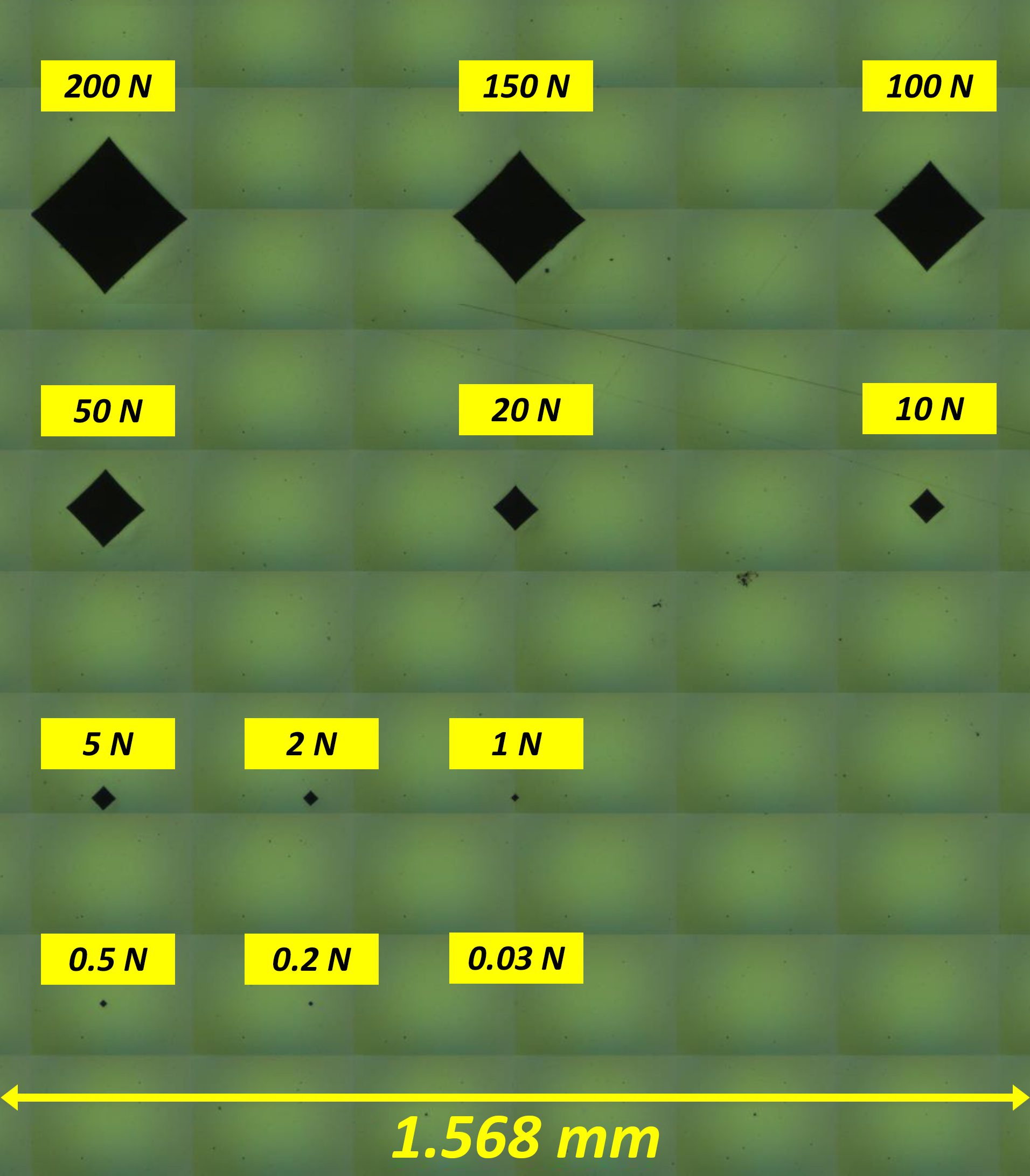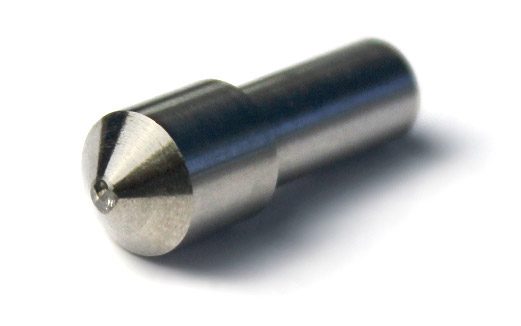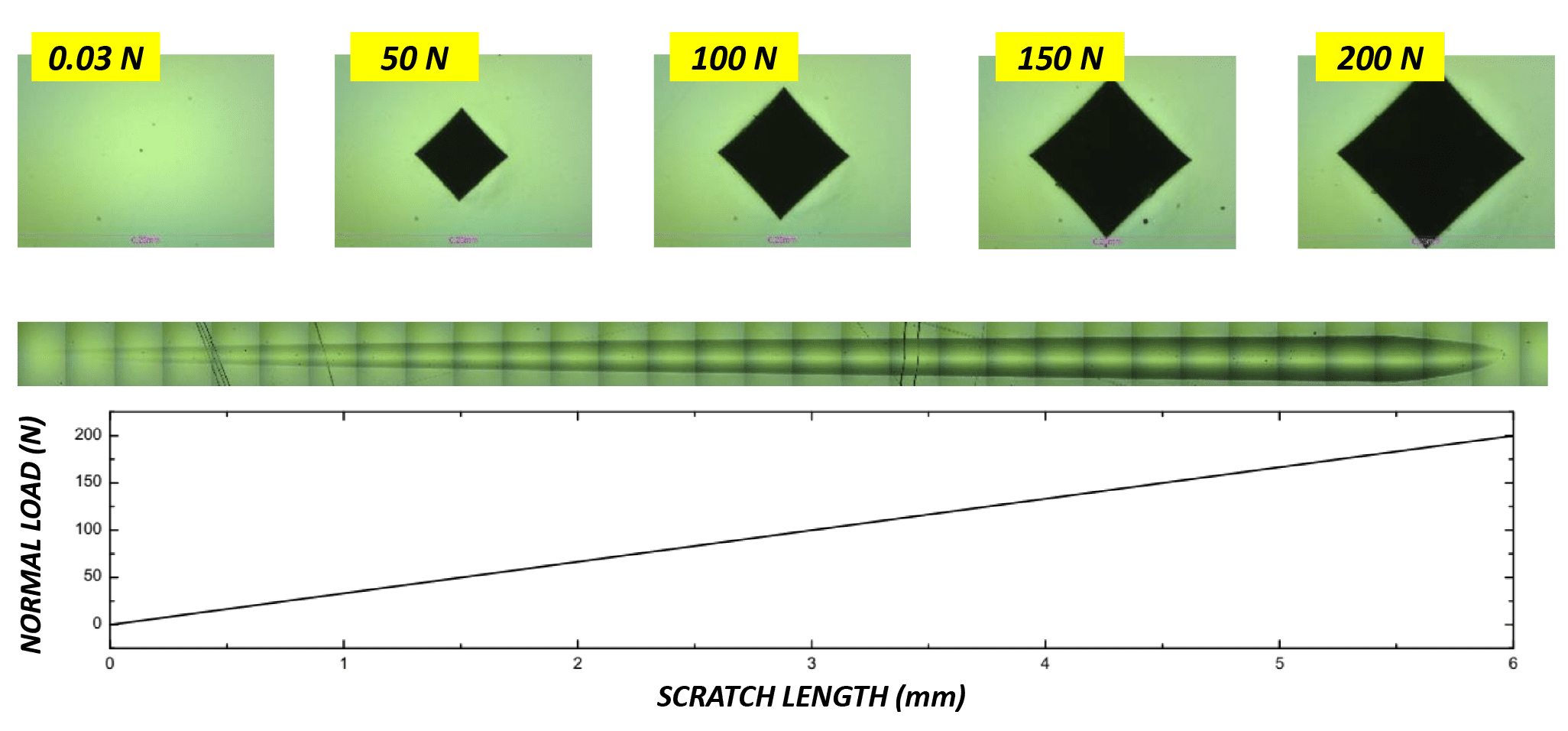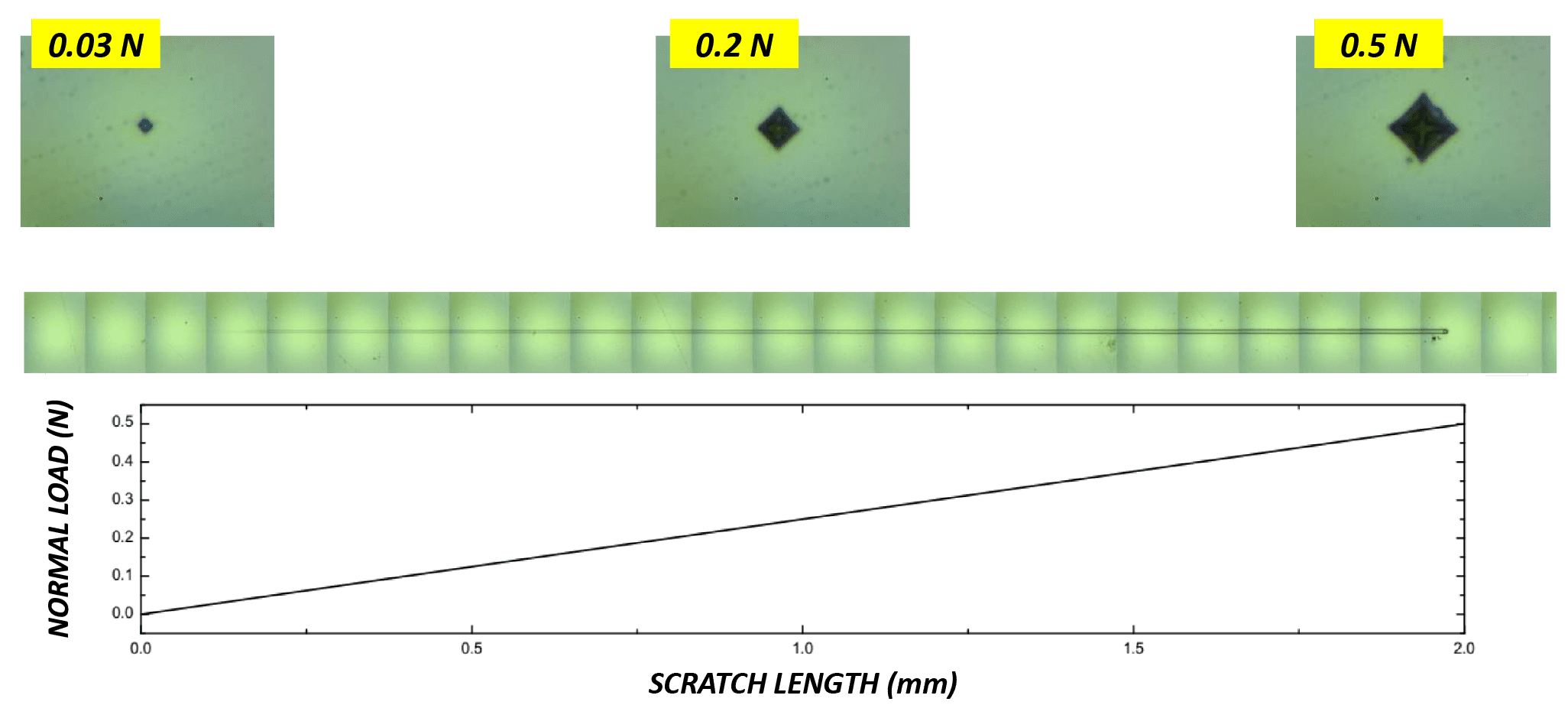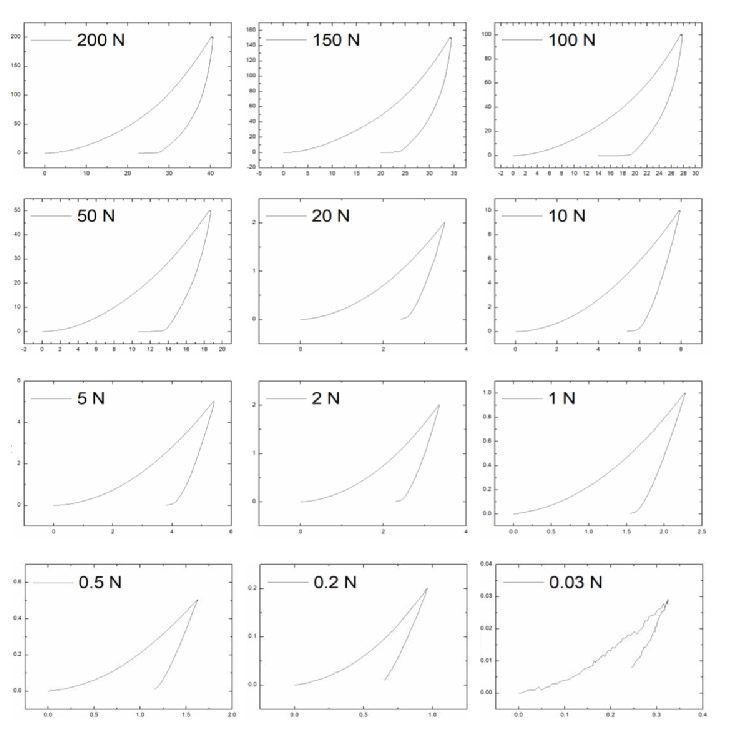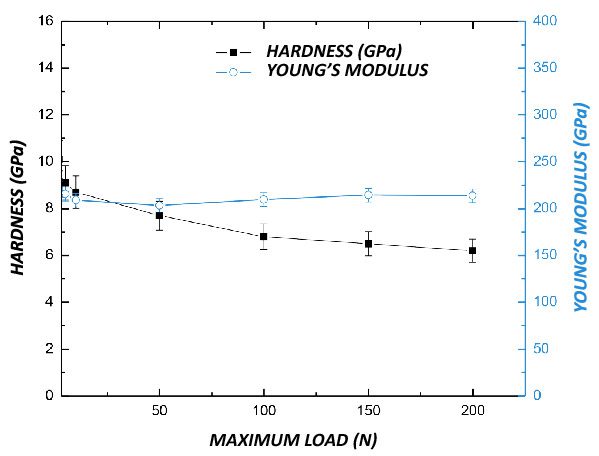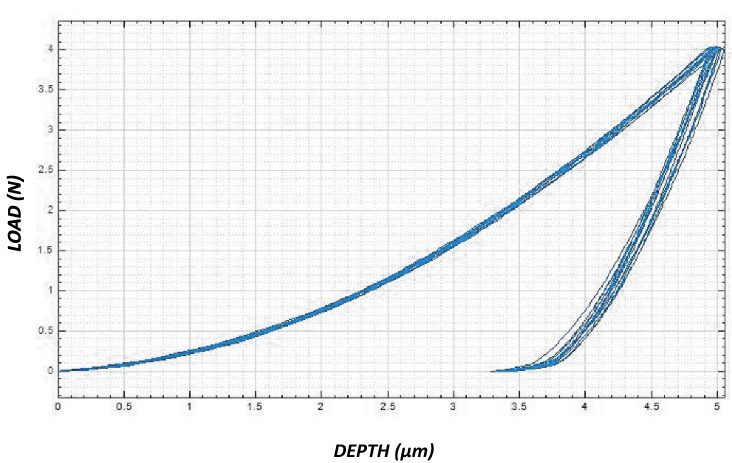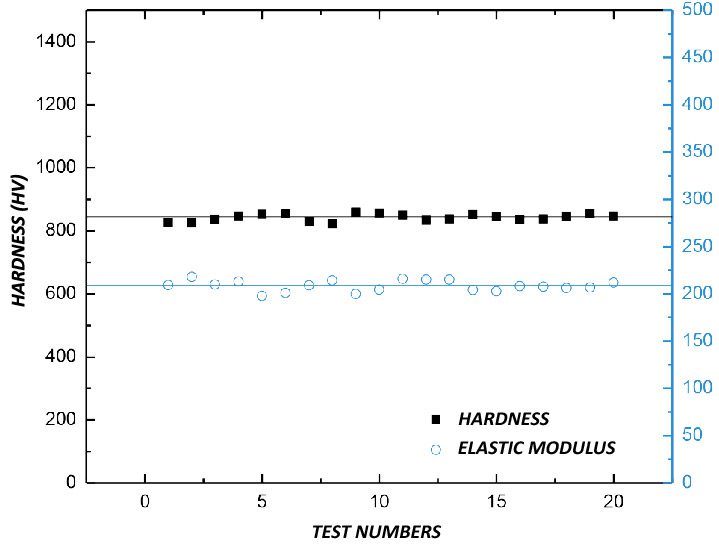INTRODUCTION
Standard Vickers Micro Hardness Testers have usable load ranges from 10 to 2000 gram force (gf). Standard Vickers Macro Hardness Testers load from 1 to 50 Kgf. These instruments are not only very limited in range of loads but they are also inaccurate when dealing with rougher surfaces or low loads when indents become too small to be measured visually. These limitations are intrinsic to older technology and as a result, instrumented indentation is becoming the standard choice due to the higher accuracy and performance it brings.
With NANOVEA’s world leading micro mechanical testing systems, Vickers hardness is automatically calculated from depth versus load data with the widest load range on a single module ever available (0.3 grams to 2 Kg or 6 grams to 40 Kg). Because it measures hardness from depth versus load curves, the NANOVEA Micro Module can measure any type of materials including very elastic ones. It also can provide not only Vickers hardness but also accurate elastic modulus and creep data in addition to other types of test such as scratch adhesion testing, wear, fatigue testing, yield strength and fracture toughness for a complete range of quality control data.
NOW THE WORLD'S LEADING MICRO MECHANICAL TESTING
In this applications note, it will be explained how the Micro Module has been designed to offer the world’s leading instrumented indentation and scratch testing. The Micro Module’s wide range testing capability is ideal for many applications. For example, the load range allows for accurate hardness and elastic modulus measurements of thin hard coatings and can then apply much higher loads to measure the adhesion of these same coatings.


